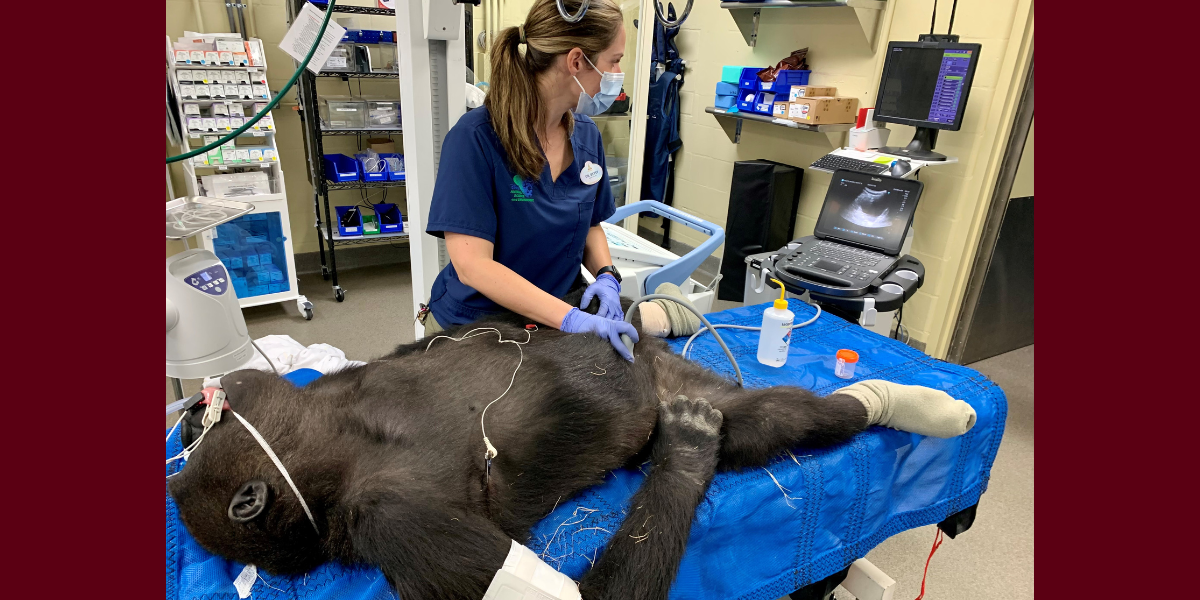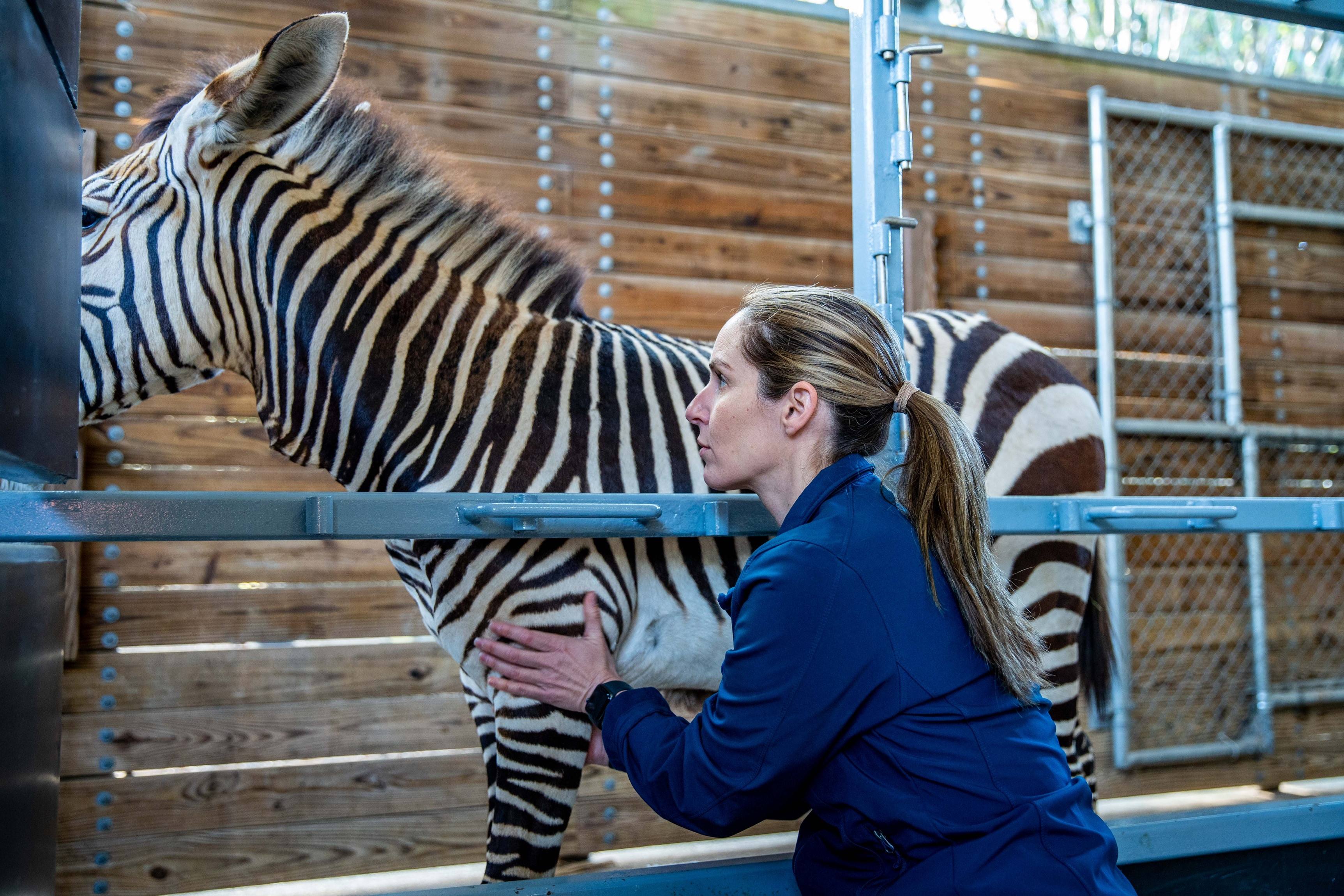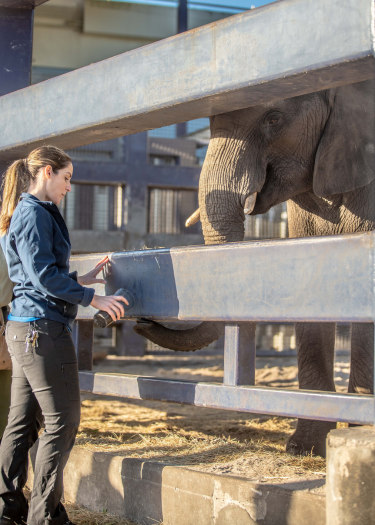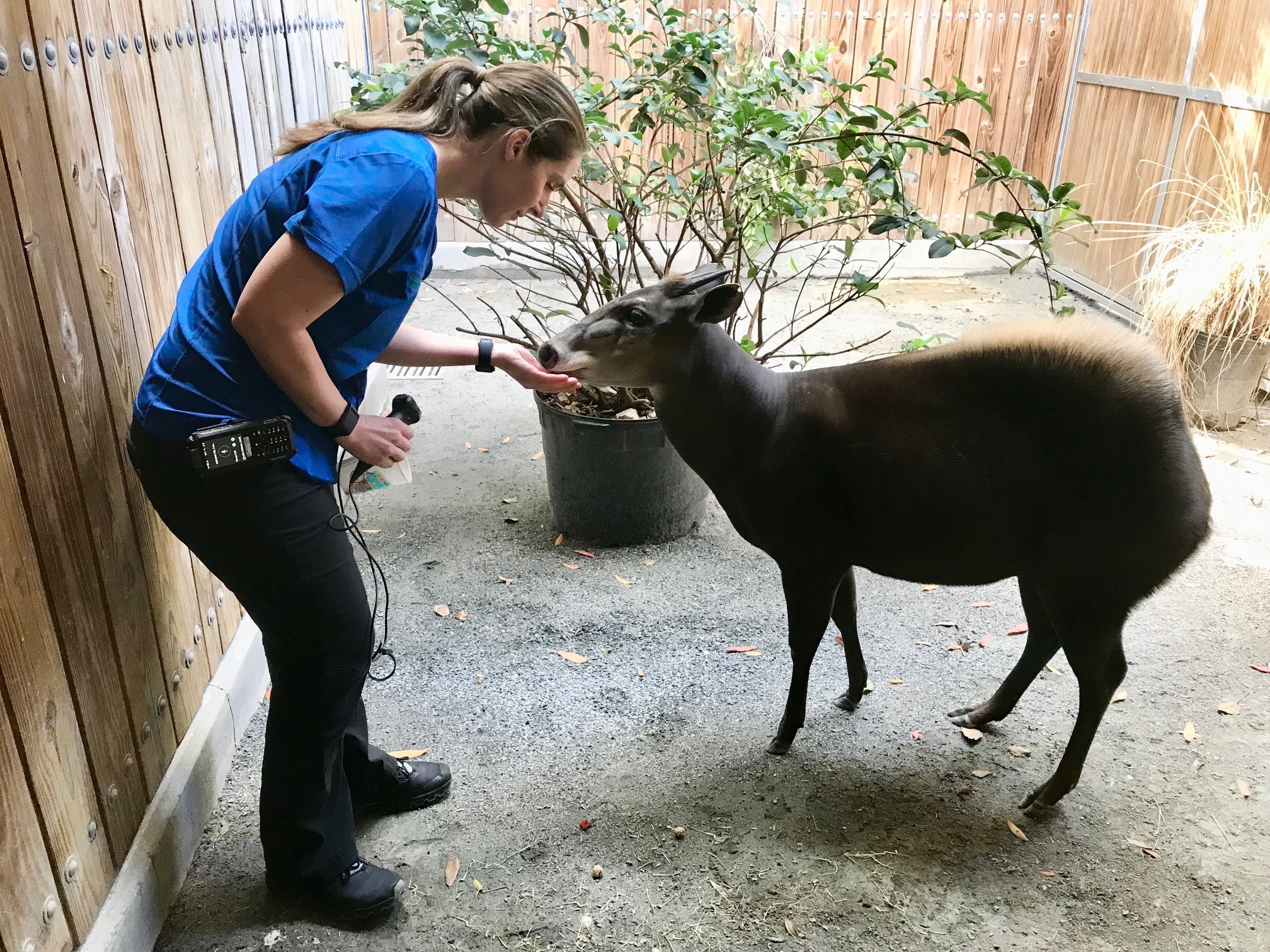Living the dream: What it takes to become a Disney’s Animal Kingdom vet
CVM alumna Dr. Betsy Stringer has a job any kid—and many adults—would envy

CVM alumna Dr. Betsy Stringer has a job any kid—and many adults—would envy
Dr. Betsy Stringer, '05 DVM, DACZM, performs an ultrasound scan on a gorilla.
At the start of a balmy September day in Orlando, Fla., Betsy Stringer, DVM, DACZM, anesthetized a sick seahorse for a diagnostic exam. That afternoon, her patient was a manatee. Tomorrow, she suspected she may work on a lion or rhinoceros.
Stringer, an ‘05 graduate of the University of Minnesota (UMN) College of Veterinary Medicine (CVM), knew she wanted to be a veterinarian when she was in kindergarten in Fergus Falls, Minn. By high school, she worked in a veterinary clinic. By the time she was accepted into the UMN for her undergraduate program, she had cultivated an intense passion for endangered species conservation and wildlife veterinary medicine.
“Once I learned that there was a path for that, it’s all I wanted to do,” Stringer says, adding that initially she felt discouraged, knowing what a difficult path it was to carve. It was tough, but not impossible, so Stringer put everything she had into setting herself up for success.
She went right from an undergraduate biology program to the UMN’s DVM program. During her summers and weekends, she worked as a zookeeper at the Minnesota Zoo. She also did externships at The Raptor Center and several zoos around the country, served as president of the university’s Zoological, Exotic, Avian and Wildlife Medicine Club, and even missed school to attend the American Association of Zoo Veterinarians annual conference.
“I did everything I could to get experience working with a wide variety of species,” Stringer says.

After graduating with her DVM in 2005, Stringer completed a two-year zoo medicine internship at the Indianapolis Zoo, where she continued to diversify her knowledge needed to work with everything from snakes to penguins. There, Stringer got hands-on clinical experience. She’d intubated polar bears, performed surgery on iguanas, and anesthetized dolphins, under the guidance of seasoned zoological medicine veterinarians.
“It takes years of clinical training to get your feet under you, to become competent as a zoo vet,” Stringer says.
After that, she completed a three-year zoo medicine residency at North Carolina State and the North Carolina Zoo and Aquariums, which was more academic-focused. She still worked at the zoo and aquariums but also taught courses on sea turtle, invertebrate, ferret, and fish medicine. She also conducted research and published numerous scientific articles, all in preparation for zoo medicine boards.

“Internships and residencies in zoo medicine are some of the most competitive in the industry. For students interested in getting into this profession, I’d recommend getting board-certified as a zoo specialist. To prepare for that, students should take any opportunity they can to be competitive for those training programs later on,” Stringer says.
This could mean volunteering, official training roles, and coursework to get exposure to zoological medicine. “And get good grades,” she adds.
After 13 years of schooling and training, Stringer was finally ready to take the incredibly difficult, two-day zoological medicine boards. At the time, she was only the 150th person in the world to have passed. More than a decade later, still only about 300 veterinarians hold the credential.
“On the exam, they ask about everything from fish anesthesia to giraffe foot anatomy to dental disease in walruses,” she says.
After her residency, Stringer worked as an associate veterinarian at the Denver Zoo for nearly a decade when Disney had a job opening. She’s now been in her dream job for the past three years as a veterinarian at Disney’s Animal Kingdom, Disney’s Animal Kingdom Lodge, and The Seas with Nemo & Friends at EPCOT, with roughly 5,000 animals between the three.
Many of the animals are trained through positive reinforcement for medical work. For example, an elephant may be trained to put its foot on an X-ray plate, and Stringer and her colleagues work closely with trainers to accomplish these medical behaviors. She also appears on the Disney+ docuseries, “Magic of Disney's Animal Kingdom.” No two days are the same, and her work perfectly aligns with her original passions: animal health and conservation.
“Everyone who works in this profession is not only passionate about animal health but also about making a bigger difference for animals in the wild,” she says. “The animals that we work with in zoos and aquariums are ambassadors for their species. They help people connect with wildlife and care about our planet.”
